June Gardening
Soil preparation for planting out
June is all about new season's roses arriving in store. Most flower gardeners consider it unthinkable to create a garden without roses as they can easily lift your garden out of the ordinary. Simply by situating them so that they drape along walls, cover arches across paths, twine around pillars, or grow as borders and in pots, they will flaunt their powerful and sturdy beauty much their admirerer's delight.
While rose planting time is here, before you rush into the garden with the spade in one hand and the rose in the other, it is important to select a position that receives at least half a days sunshine and has soil with good drainage. Remember, the answer is in the soil. It is important to realise that soil is a living thing and, like the gardener, it can become tired or sick so we must treat our soil with respect.
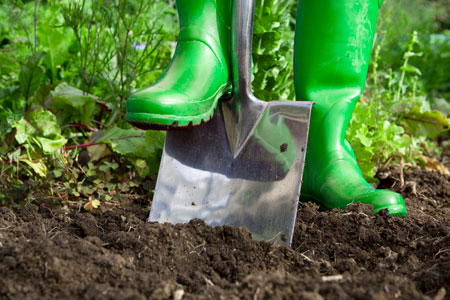 Soil preparation
Soil preparation
Heavy clay soil is made up of very fine minute particles of rock and in most cases there is not enough air for plant roots and they bang their roots against hard walls of clay.
Soil is made up of bits of rock, water, rotted vegetation and decomposing leaves. Preparing the rose garden with some good digging will improve drainage and introduce air into the soil.
Light sandy soil is a grainy mix of larger particles of rock that has too much air and plants are not able to cling and absorb nutrients. A mixture of the two is perfect.
Mulching with leaves and compost will allow the earthworms to drag the humus underground.
Composts add bulk to sandy soil and air to heavy soil. During our tidy up in the garden we whisked away the natural composting leaves so now it is important to offset our tidying by blanketing the soil with Nichols Super Garden Mix or mushroom compost.
Planting out
Roses will try to grow no matter how we plant them but there are a few tasks that we can do to help them on their journey.
- First of all dig a hole twice as big as the root ball and loosen the earth at the bottom of the hole.
- Mix some Tui Rose & Shrub Mix into the bottom of the hole and then settle the plant in the hole with the graft (knobby bit) one centimetre below the surface.
- Spread the roots around in all directions.
- Replace half the soil with a little more rose compost, firm and water in, and then top up with the remaining soil, firm and water again.
- When the root ball has been firmed and watered there shouldn’t be any spaces where roots are left in a pocket of air and desperately searching for some soil to cling to.
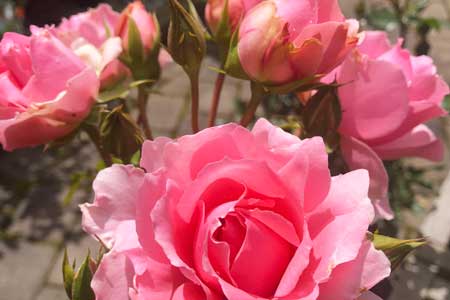
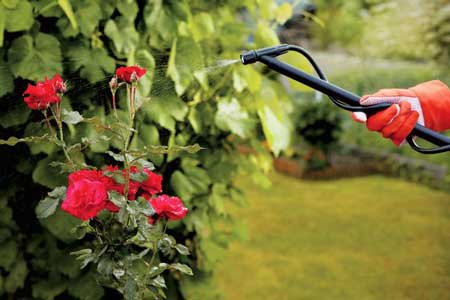
Clean up
Now is the time to apply winter clean up sprays on to our roses and fruit trees. If you do no other spraying during the year, treat your roses (and fruit trees) to a couple of winter clean-up sprays ... you will be pleasantly surprised at the difference a winter spray will make to the health of these plants
- First of all use Yates Lime Sulphur to wipe out fungus diseases.
- Three weeks later, spray with Yates Conqueror Oil to smother any scale and eggs of aphids and mites.
- Remove any saucers from underneath your terracotta and ceramic outdoor pots and they will be less likely to crack in the frost if they are well drained.
- Raise pots onto ‘pot feet’ or short bits of bamboo or kindling cut to fit under the pot and this will solve the problem of drainage over winter.
- Rejuvenate some of these pots with brightly coloured winter-flowering polyanthus, primula, pansies and violas. They will provide a cheerful splash of colour during those cold days of winter that lay ahead.
- Apply a side dressing of dried blood to polys and prims to prolong the flowering periods, particularly if heavy rains may have leached away valuable soil nutrients. They will reward you ten-fold for feeding them!
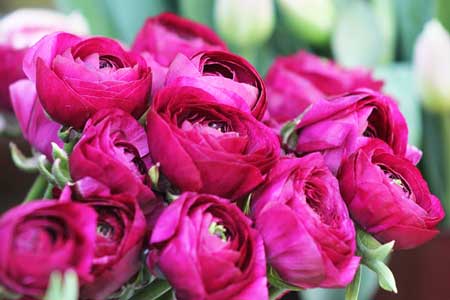 Peonies
Peonies
With their buxom flaunting flowers, Peonies have been described as being like roses without thorns. All our grannies grew them. And, they are among the least demanding of all perennials, growing very successfully with little more than good drainage, a cold winter and a bit of fertile soil.
Peonies need moisture during spring but little else afterwards and are amongst the most drought resistant perennials. Even though the sun in summer and autumn bakes the ground the tubers remain plump and firm, retaining nutrients for their growth next year.
Select a site that will receive plenty of sunshine and make the planting hole deep enough to bury the plump red sprouting shoots approx. 4 or 5cm below the surface. It is said that the first year the peony sleeps, the next year it creeps and the third year it leaps!
Peonies are a long-term investment and can give you pleasure for forty years or more. Choose their position carefully because peonies hate disturbance and can take another two seasons to settle back into flowering routine.
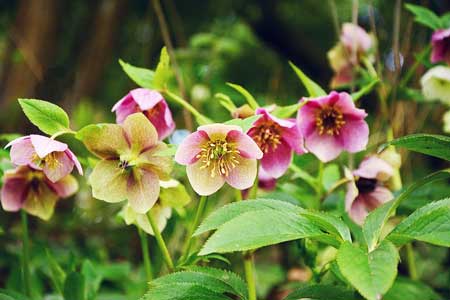 Hellebores
Hellebores
It’s also a great time to add some winter colour to your garden, in the form of Hellebores. They come in a range of colours and in shades of white, green, pink and purple.
Hellebores love the shade and are at home in the dappled shade of larger trees and shrubs. They prefer average soil moisture and an occasional feed of plant food is enough to keep them happy. Apart from that, they are one of the hardiest perennials you will probably come across!
Shallots
In the vegetable garden plant shallots in free draining soil where they will get all day sunshine. Press each bulb firmly into the soil leaving the top half above ground.
While shallots are a member of the onion family, they are formed more like garlic than onions. Shallots are favoured for their mild, sweet onion flavour and are a real treat in any cook’s kitchen!
Garlic
Garlic, the natural antibiotic, should be planted in a position that receives plenty of sunshine. Detach each clove from the mother plant and bury half the clove in soil leaving half the clove above ground.
Spare a thought for...
As the colder weather closes in, it's a good time to spare a thought for our feathered friends in the garden. We have a fantastic range of bird feeders, seed, nectar feeders and more to attract birds to your garden. Click Here to see our product range.
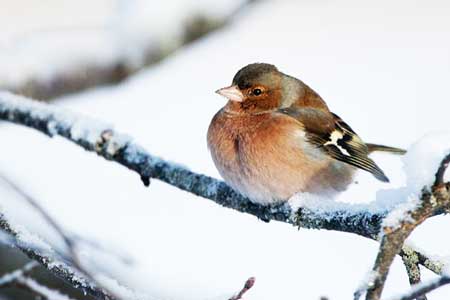
Apart from that, winter is here, so plump up the cushions, flop into your favourite chair with books and plant catalogues, ‘Google’ interesting gardening ideas and dream up your next garden project!
Next month - it's pruning season for roses!
Happy Gardening Everyone
9997